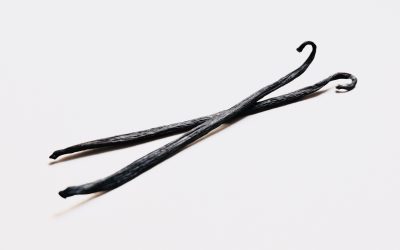We all know about white, milk and dark chocolate but since 2017 there has been a new kid on the block, Ruby chocolate.
This new variety isn’t just a coloured or flavoured white chocolate, it stands as a separate type. The reason is that the dark pink colour is completely natural and comes from the colour of the cocoa beans.
It was first produced by Barry Callebaut. But was quickly followed by other chocolate producers rushing to bring out their own ranges of the product.
What does ruby chocolate taste like?
With the colour it does taste as you expect, it has a lot of acidity that resembles red berries. This leads to the assumption it Is just berry flavoured chocolate. The flavour however just comes down to the beans and the process.
In short, it just tastes a lot like white chocolate with raspberry and lemon notes. When Ruby chocolate was first released the hype around the product was intriguing. With a limited supply, everyone was looking to taste it. The first bag I got hold of required knowing someone inside Barry Callebaut’s head office and a 6 hour journey to the factory just outside of Paris. It wasn’t the easiest thing get your hands on.
I must say that after the effort I went through to acquire it, I was disappointed. The flavour is a little different and interesting, as is the idea, however since then I haven’t rushed to get it on a menu. I can’t see it being a huge success any time in the future.
What can you use it for?
Ruby Chocolate doesn’t tend to have any limitations compared to milk, white or dark chocolates. It tempers just as well and can be used for the same garnishes, dipping or mousses ect in the same way you would use white chocolate.
The tempering temperature curve will always be different for all chocolates and brands so always check the bag before tempering.
With the acidic flavour of the chocolate recipes definitely need to be adjusted in regards to sugar content. I would always treat it like white chocolate in a recipe and then taste the finished product before adjusting.
How is ruby chocolate made?
The exact process for making ruby chocolate is a closely guarded trade secret. However I have listed below the standard steps of chocolate making. These are all critical to take the chocolate from bean to bar no matter which type is being made.
Harvesting the Cocoa
Whilst there are 3,000 different varieties that have been classified as cacao, the only type commercially produced is the Theobroma. This cacao is grown on all forms of cocoa tree. Each variety has its own distinct flavour that is influenced by the soil and the climate of the area.
The cacao tree is delicate and therefore must be grown in very specific areas around the equator. Most commonly now that is in West Africa, South America and Southeast Asia.
During the second or third year of growing the cacao will begin to bear fruit. They will start to produce blossoms on the trunk and thicker branches. they are then pollinated by insects. Once pollinated, each blossom develops into a cacao pod over a period of 6 months. The tree can bear fruit for 25 to 30 years. The fully grown pod is shaped like an American football, and the colour and texture can vary depending on the variety of cacao. As they ripen, they change colour from green to yellow or red.
Pods are harvested every 6 months, a process which can take several months. The pods will ripen at different times. The fruit is cut from the tree with a machete or knife and the pods are then opened carefully and the cocoa beans are removed to begin the process of fermentation. Each individual pod will contain around 40-80 cocoa seeds. These are formed of a nib, the germ and a protective outer shell.
Fermentation
The fermentation process lasts for 5-7 days, and starts at the moment that the seeds are removed from the pod. The harvested fresh beans and pulp are placed in piles and covered to regulate the temperature. If the temperature is too hot, it will cause the seeds to germinate. It is important though that the seed dies to allow the fermentation process, which initiates the development of flavour.
During the fermentation natural bacteria and yeast start to multiply and break down the sugar in the pulp surrounding the beans. This breakdown creates alcohol that kills the bean. The lactic acid bacteria feed on the alcohol and convert the organic acids into lactic acid. Then, the acetic acid converts the lactic acid in acetic acid.
It is crucial to make sure that the length of fermentation is correct. If the fermentation process is too short the flavour will not fully develop, and if it is too long it will destroy the bean.
Drying and Shipping
Due to the high concentration of water in cocoa beans, it is important to dry them. This prevents them from rotting. This is the process that changes the colour of the bean to the recognisable brown, and aids the preservation of the bean as the lower humidity prevents the growth of mould. Once the beans are completely dried, they are bagged and shipped to the manufacturers. They then turn them into what we know as chocolate.
Cleaning and Roasting
Once the beans have arrived at the manufacturer they are first cleaned, to remove any impurities such as metal, sand or organic matter. The beans are then roasted at between 110 and 220 degrees Celsius. The temperature depends on the type of bean which will develop the chocolate flavour within the nib. During the roasting process the moisture content of the bean is reduced to 2%, and the starch in the beans is transformed to dextrin.
Shelling and Winnowing
After the beans have been roasted, the lightweight outer shell (or husk) should be removed, leaving the coach nibs to be further processed. In some cases, the beans will be pre-treated with infrared radiation to soften the husks,which will make them easier to remove.
There are two ways to remove the husks from the nibs, either by passing the beans through a series of low impact crushers or dropping the beans into a set of rotating blades. Once broken, the pieces are passed through screens, which sorts them by size. As the similar sized nibs and husks are being separated, air is blown across the chamber which blows the husks into a separate chamber. The husks collected are recycled into mulch, and the nibs are passed onto the next stage of production.
Blending, Grinding and Mixing
The different varieties of cocoa beans will be blended in particular recipes depending on the specific recipe of the manufacturer. Once the blend is put together the beans are sent to be ground. It is at this stage that the sugar, vanillin and if applicable milk powder are added to the cocoa beans and ground into the chocolate mass.
Once ground, the chocolate mass is sent on to be rolled into finer particles, in a process called refining.
Refining
The refining process involved being passed repeatedly between steel rollers, as the distance between them decreases and the mass is ground to finer particles. The chocolate is rolled to 120 microns, then is sent through 5 more rollers to take it down to 20 microns. The specific sizes of the particles is highly important in producing good quality chocolate, as if the particle size is too large it will result in a coarse mouthfeel, or if it is too small the chocolate will have a sticky texture in the final chocolate.
Conching
Once refined, the chocolate is treated to reduce it’s naturally acidic flavour. This process is conching, which involves kneading and churning the chocolate mass for between 8 and 72 hours at between 50 and 100 degrees Celsius depending on the desired finish. The length and temperature used in this process depends on the varieties of chocolate used and the specifications of the specific manufacturer.
There are three phases of the conching process, which we will look at here:
• Dry Conching – Slow speed rotation, reducing the moisture is the chocolate mass.
• Plasticizing – The addition of cocoa butter, with the temperature and speed increased. At this stage we see the development of the chocolate flavour.
• Liquid Conching – The blade direction is reversed, and the mass starts to cool down. At this stage, any additional cocoa butter, lecithin or natural vanilla are added on high speed to emulsify.
Tempering, Moulding and Packaging
Once the conching process is finished, the chocolate is cooled down and tempered. This process gives the chocolate stability, as well as a pleasant snap, texture and sheen. Once tempered the chocolate can then be moulded into whatever shape is required, whether it be bars or coins etc.
The chocolate must be cooled from 30 to 20 degrees celsius to allow the stable sugar crystals to form. The temperature is dropped again to around 10 degrees Celsius to allow it to harden, then raised slightly again to around 20 degrees celsius in order to prepare the chocolate for being stored at warmer temperatures.
At this point the chocolate can then be packaged, to protect it from light, heat, odours and humidity.
To learn over 50 step by step recipes you can use to start your own business, along with regular live classes, sign up to The Online Pastry School now to get a 30 day free trial here
To find out more and order Ruby chocolate in the UK just see here


